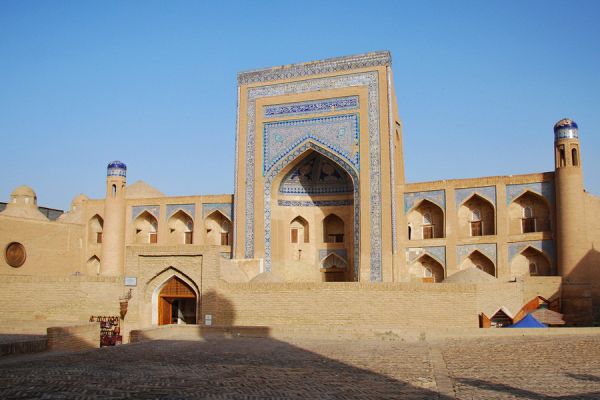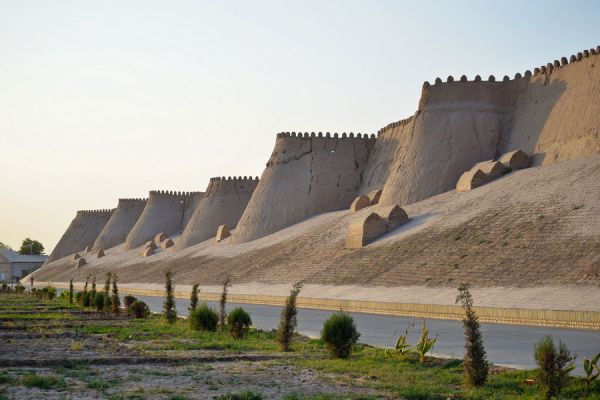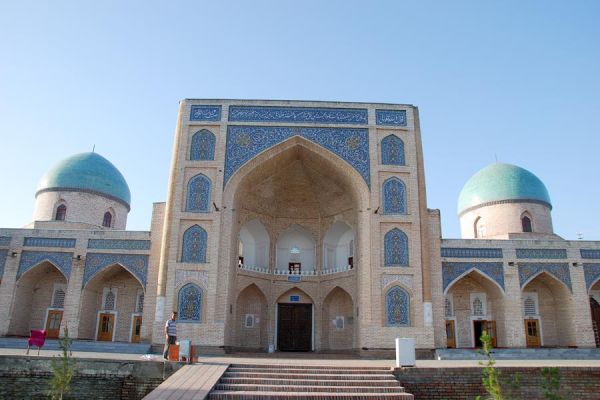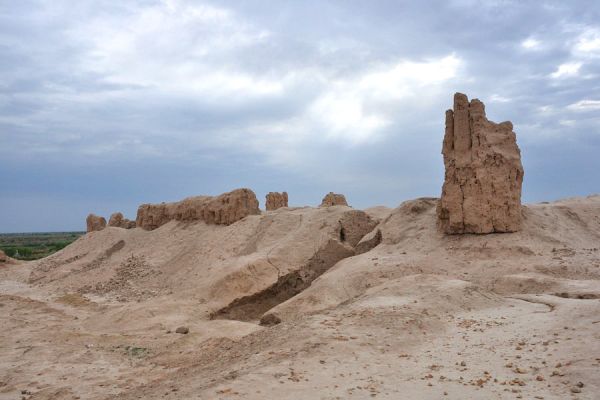Allakuli Khan Madrasah in Khiva
The Allakuli Khan Madrasah, along with the adjacent Alla Kuli Khan caravanserai, is part of the Ichan-Kala complex of historical and architectural attractions in the city of Khiva in Uzbekistan, which is an open-air museum of 14th-century buildings.
History
In the old days, on the way from the eastern entrance to Ichan-Kala to tim (the bazaar under the roof), there was the Allakuli Khan madrasah, one of the most famous in Khiva and the surrounding area. It was built at the expense of the Uzbek Khan Alla-Kuli in the middle of the 19th century, work was carried out for two years, construction began in 1833, and was completed in 1835.
The name of Khan Alla-kuli, an active follower of the works of Muhammad Rahim Khan I's father, in the history of Khiva is closely connected with the strengthening of the city's power, the strengthening of the country's borders and the rapid development of relations with many countries of the world. During his reign, residential buildings, palaces, shopping malls, mosques and caravanserais were actively built in the cityname ofn Alla-kuli, an active follower of the works of Muhammad Rahim Khan I's father, in the history of Khiva isy connected with the strengthening of the city's power, the strengthening of the country's borders and the rapid development of relations with many countries of the world. During his reign, residential buildings, palaces, shopping malls, mosques and caravanserais were actively built in the city. The famous khan of Khiva, Allakulikhan, in order to turn the city into the most beautiful and attractive object in Asia, decided to dismantle the old, dilapidated madrasahs, built at one time from a frThe famous khan of Khiva, Allakulikhan, in order to turn the city into the most beautiful and attractive object in Asia, decided to dismantle the old, dilapidated madrasahs, built at one time from a frame and mud bricks, and build new educational institutions made of burnt bricks in their place. This is how the Allakuli Khan madrasah appeared in Khiva.
The structure was erected on an artificial platform at a height of three meters, as a result of which it was noticeably raised above the domes of the neighboring educational institution Khojamberdibia and included in the territory of the inner part of the city of Khiva.
In the century before last, the first floor was occupied by a public library, accessible to students of all city madrassas. The maintenance of the library was provided by income from the nearby caravanserai and tima of the same name. Now the building serves as a museum of medical art and the history of medicine named after the famous healer Abu Ali Ibn Sina, known in the world of healing as Avicenna. There is also a renovated handicraft center on the territory of the madrasah.
Architecture
The architecture of the Allakuli Khan madrasah does not stand out in any special way, nevertheless, this impressive building isThe architecture of the Allakuli Khan madrasah does not stand out in any special way, nevertheless, this impressive building is considered one of the most majestic and beautiful buildings of that time in the city.
The courtyard of the Allakuli Khan madrasah in Khiva is slightly different from the traditional courtyards of educational institutions of that time. The rows of hujras, which have two floors, rest on the edges of the tima domes and rise above the domes of the Palwan Darwaza entrance gate. The madrasah building itself has the shape not of a rectangle, but of a trapezoid with a four-bay, two-story courtyard.
The Allakuli Khan madrasah complex includes 99 hujras (or cells), 2 mosques (winter and summer in western Aivan), a lecture hall (darshan), and an entrance lobby. Each hujra is equipped with a door and a window, its lower part is decorated with burnt bricks in the shape of a square, and the walls are plastered with ganch. The interior vaults of the Khujr are not decorated with anything.
The interior of madrasah buildings, including mosques, has no special decorations and large domes. The walls in the buildings are smooth, the niches are deep and unsightly. All decorations are located ointerior of madrasah buildings, including mosques, has no special decorations and large domes. The walls in the buildings are smooth, the niches are deep and unsightly. All decorations are located on the exterior walls of the establishment. The main facade of the madrasah, made in the form of majolica of the Khorezm type in graphic black-and-white and picturesque blue colors, covering all vertical surfaces and semicircles, overlooks the courtyard of another educational institution called Khojamberdybiya. Majolica on different walls has a different pattern, depending on its location.
The

















